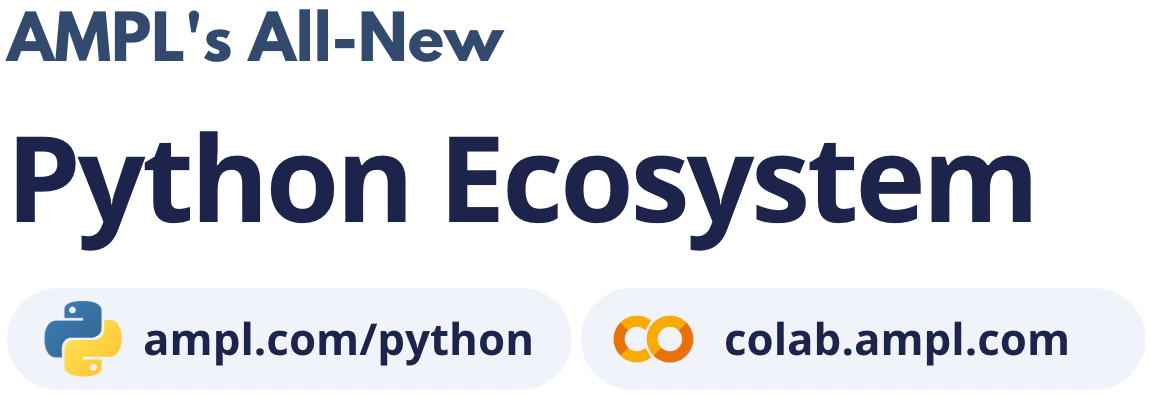Structure¶
The API is written in C++ (code in /cpp) and is then wrapped to other target languages by using SWIG. Therefore, any modification, fix, or the code to add a solver API must be written in such language and follow its structure.
The interfaces are intented to be very simple, to encourage people contributions and to ease debugging. In a nutshell, they are organised as a (core) set of interfaces and some derived implementations; specifically, each solver must implement three interfaces, that are represented in C++ by three abstract classes.
It has to be noted that, since the AMPLModel-derived object instance contains a reference to the solver-specific in memory representation of the model, there is no possible functionality to create a model instance linked to one solver and solve it with another one.
The following are the base classes implemented for each solver:
![digraph hierarchy {
size="6,6"
node[shape=record,style=filled,fillcolor=gray95]
edge[dir=back, arrowtail=empty]
SolverDriver[label = "{SolverDriver|Constructs an instance\lof a model in solver\lmemory}"]
AMPLModel[label = "{AMPLModel|Holds a reference to the model in\lsolver memory and wraps the\lmost common\lfunctionalities}"]
BaseCB[label = "{BaseCallback|Represents a callback to be used\lduring the solution process}"]
}](../_images/graphviz-5ff15c24eda67da363abb28df26c089de403ff4e.png)
AMPLModel(cpp,python) is the main interface, it provides functionalities like:keep a reference to the in-memory representation of the model
solve the model
get solution status, solution vector and objective value
access common properties like number of variables, of constraints
assign callback object
BaseCallbackwhen derived for a specific solver (see for examplecppandpython), provides:access to various properties accessible during the solution process
functions to add cuts or lazy constraints
ability to terminate the solution process
So, taking gurobi as an example, we have:
![digraph hierarchy {
size="8,8"
node[shape=record,style=filled,fillcolor=gray95]
edge[dir=back, arrowtail=empty]
SolverDriver[label = "{SolverDriver|}"]
GurobiDrv[label = "{GurobiDrv|Construct an instance of GurobiModel}"]
AMPLModel[label = "{AMPLModel|}"]
GurobiModel[label = "{GurobiModel|Holds a reference to the native\lGRBModel object and implements\lcommon functionalities by means\lof the Gurobi C API}"]
BaseCallback[label = "{BaseCallback|Represents a callback to be used\lduring the solution process}"]
GurobiCallback[label = "{GurobiCallback|Provides the interface functionalities\lby means of the Gurobi C API}"]
AMPLModel->GurobiModel
SolverDriver->GurobiDrv
BaseCallback->GurobiCallback
}](../_images/graphviz-68aac759f7826464ba81d25a21214bb004c8e84c.png)
The derived classes implement the interfaces specified in their base classes and extend them with some solver-specific functionalities. This leads to three possible usages:
Generic usage: using only functions available in the base classes, the same code can be reused to implement solver-independent logic. To support this type of usage, the class
GenericCallbackis provided (cpp,python), deriving which a solver-independent callback can be defined.Solver specific usage: using the additional functions provided by each solver implementation, the code can be used only with one solver
Solver native usage: a subcase of the case above: each solver-specific model class provides access to the native C model object, on which all the C solver libraries functionalities can be used

